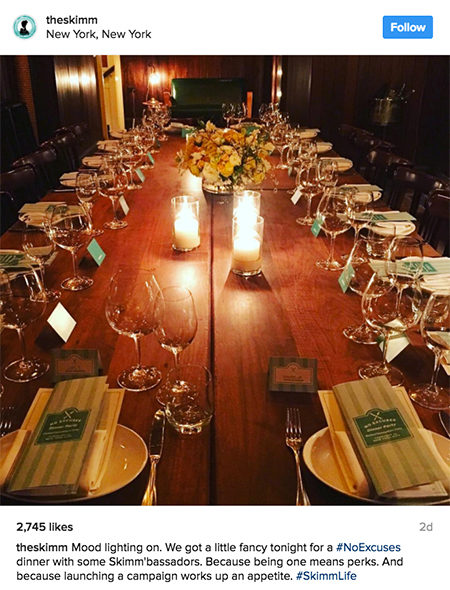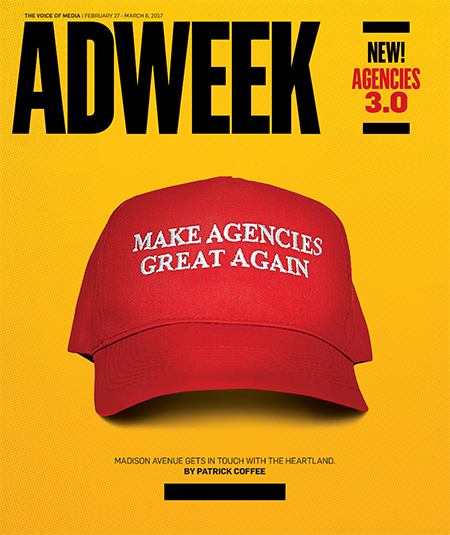In an era when making a political stand is becoming increasingly common among brands, it would seem like an obvious move for theSkimm, a newsletter and media platform that counts millions of millennial women as fans, to dive into the fray. But unlike many of its female-focused competitors that made a point of taking the Trump administration to task for its treatment of issues like reproductive rights and immigration, theSkimm has steered clear of taking sides—a move that, in today’s stormy climate, seems almost revolutionary.

Founded by 30-year-old former NBC News producers Carly Zakin and Danielle Weisberg, theSkimm launched in 2012 as a daily newsletter summarizing the day’s top news stories (and some entertaining tidbits) in an easily digestible, conversational format. Today, thanks to investments from VC firms and companies like 21st Century Fox and The New York Times, the brand has seen major growth, boasting a total audience of 5 million across all its offerings. There’s an app (for $2.99 a month, Skimm Ahead lets readers follow Skimm-worthy events), ecommerce partnerships (its curated selection with Wine Awesomeness has proved especially popular), a brand ambassador (or “Skimm’bassador”) program with 20,000 members, and more. At its core, though, theSkimm’s mission is to help its audience become better educated about current events.
“The point of theSkimm is not to represent a point of view; it’s to call things out and cut through the weeds and explain what’s going on,” said Weisberg. “And I feel like now more than ever, that really calls for us to be nonpartisan, which I think we’ve always been, but we’ve really doubled down and recommitted to it. It was easy for us to make that choice.”
For an advertiser like Buick, which has sponsored content in The Daily Skimm, the outlet’s approach is welcome. “What we liked about them is that they fill a void in communications, specifically to young millennial women,” said Buick marketing director Molly Peck. “The fact that it is unbiased and nonpartisan is a plus because so much of the media favors one direction or another. I think it’s smart to empower young women to make their own choices.”
That’s not to say that theSkimm is avoiding politics. Far from it: During the 2016 election, it launched Skimm the Vote, an effort that involved interviewing a dozen presidential candidates, creating a platform called No Excuses where readers could take a deeper dive into policy issues, organizing events like debate-viewing parties, and registering more than 110,000 people to vote. Leading up to Election Day, theSkimm partnered with Google to help prepare readers to head to the polls.
Last fall, theSkimm also launched a new research tool, Skimm Studies, to help provide its partners (including Starbucks, Microsoft and Sherwin-Williams) with a better understanding of its millennial readers. “During the Super Bowl, we all saw brands diving into topics like immigration, and that was super interesting. But a lot of other brands are also still considering how to approach those topics, and that’s where we come in,” said Zakin.
The first installment, released in September, surveyed 3,000 females ages 22 to 35 about their political views. While the majority of women (56 percent) planned to vote for Hillary Clinton and just 8 percent said they would vote for Donald Trump, nearly a quarter were undecided. Perhaps most telling was that a mere 11 percent of all respondents said that they “strongly believed” in their chosen candidate.
Although the election’s ultimate outcome shocked much of the media, Zakin and Weisberg said that after hearing from readers, they were less than surprised. “By early afternoon, we had people calling in from states like North Carolina, Wisconsin, Michigan—states that ended up really making a difference in this election—and telling us things like, ‘Hillary didn’t show up at my school,’ or, ‘I have relatives who work in the oil industry, and Trump will protect them,’” said Zakin.
Earlier this month, in the wake of Trump’s proposed immigration ban, Skimm Studies released another survey focused specifically on that issue. It found that immigration had become the third-most important political topic among millennial women, but 72 percent felt uninformed about the issue, and 76 percent had begun looking for different news sources to get a more well-rounded opinion. Meanwhile, three in 10 women said they had decided to start or stop supporting a brand based on its stance on the immigration ban.
That data led theSkimm to reintroduce No Excuses, which will now regularly cover specific political issues, beginning with immigration. (The study will not, however, affect how theSkimm covers immigration, said Weisberg.) TheSkimm also plans to use the No Excuses platform to connect readers with different political views, both through online conversations and IRL meet-ups hosted by Skimm’bassadors. “Our whole thing is getting people informed so that they can have a viewpoint, but also be able to discuss that viewpoint with people who don’t agree,” said Zakin.
Despite its championing of unbiased journalism, theSkimm’s neutral position isn’t always seen as such by its readers—but as long as the complaints are coming from both sides, its founders know they’re doing their jobs well. “Our favorite story to share is the day after the inauguration, it was our top story on theSkimm. We got emails about the exact same [editorial] copy from people saying, ‘No wonder Fox invested in you, you’re a conservative arm!’ Or, ‘No wonder The New York Times invested in you, you’re just another liberal rag!’” said Zakin. “It was amazing!”










